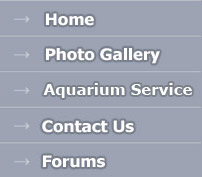About Phosphates (PO4)What Are Phosphates? Phosphate or PO 4 is a compound of Phosphorus (P), one of the top 14 out of 70 trace elements found in natural sea water that are considered to be essential for saltwater aquarium and reef tank systems. However, it is also a primary nutrient source for many forms of algae, particularly green hair species, so when high concentrations are allowed to accumulate in an aquarium, it then opens the door for aggressive algae blooms to occur. Where Do Phosphates Come From? Phosphates are introduced into a saltwater systems in various ways, such as: - By using unfiltered tap water for making up sea salt mixes or as top-off water.
- Through many common aquarium products used, such as some sea salt mixes, activated carbon, KH buffers, foods put into the tank, and many other sources.
- It is advised to pretest tap or any other fresh water source and new products used in your aquarium for phosphates, was well as nitrates. Why add more of something that you don't need in your tank to cause a problem?
How Do You Reduce High Phosphate Concentrations? The optimal phosphate level, especially for reef tanks, is an immeasurable one, or zero, with 0.05 ppm-mg/l being acceptable, and an upper level of 0.1 ppm cited as well. Having a good, reliable phosphate test kit is important. FINS recommends Hach and LaMotte brands as being good choices. Sailfert seems to have a good, precise phosphate test as well, but from our understanding the Sea Chem scale measures too high. (Read Test Kits Reviews & Compare Prices) Here are solutions for reducing high phosphate concentrations in saltwater aquariums. - Adding a limewater or kalkwasser solution has been associated with lowering phosphate levels. "In Notes From The Lab: Kalkwasser and Phosphates", a SeaScope Magazine Reprint, it states that, "One of the theories why calcium hydroxide might produce better results than calcium chloride has been that the high pH and high calcium in a saturated calcium hydroxide solution cause precipitation of phosphate from the freshwater, eliminating this algae fertilizer from the solution." Take a look at the results of the test they did using calcium hydroxide to see what the rate of reduction of phosphates were. It is interesting that, when allowing the mix to sit, after two days there was only a 50% drop in phosphates, but after five days there was a 90% drop. The conclusion is that the drop in phosphates, when using calcium hydroxide, is slow and if the mix is used right away, any phosphates remaining in the mix will be pumped into your tank.
- Regular maintenance care routines with water changes are always recommended for a healthy aquarium. This helps to control phosphates, DOCs, nitrates and many other unwanted chemicals elements and compounds in saltwater systems that contribute to water quality problems.
- You can use commercially available phosphate removing products, such as Sea Chem's PhosGuard, Thiel Aqua Tech's X-Phosphate, Kent Marine's Phosphate Sponge and Coralife's Phosphate Remover. Luis Mercado conducted a test on phosphate and silicate removing compounds using these four products, which concluded comparatively good results from all four of them. Poly Filter material by Poly Bio Marine Inc. is highly recommended, along with some these other Top Pick Nitrate Absorbing Products as well.
-
- Note that when using absorbing materials or compounds, they need to be changed or rejuvenated regularly, as once they become saturated they are exhausted. This means they can no longer absorb anything, and what you are trying to remove is just staying in your system.
|


